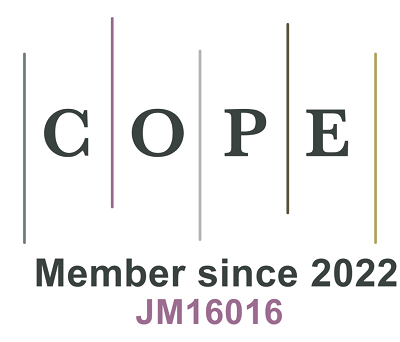REFERENCES
2. Kelly T, Yang W, Chen CS, Reynolds K, He J. Global burden of obesity in 2005 and projections to 2030. Int J Obes (Lond) 2008;32:1431-7.
3. Lonardo A, Arab JP, Arrese M. Perspectives on precision medicine approaches to NAFLD diagnosis and management. Adv Ther 2021;38:2130-58.
5. Cummings JH, Engineer A. Denis Burkitt and the origins of the dietary fibre hypothesis. Nutr Res Rev 2018;31:1-15.
6. Clark CG. Refined carbohydrate foods and disease. Some implications of dietary fibre. British Journal of Surgery 1976;63:898.
7. O'keefe SJ. The association between dietary fibre deficiency and high-income lifestyle-associated diseases: Burkitt's hypothesis revisited. Lancet Gastroenterol Hepatol 2019;4:984-96.
8. Stephen AM, Champ MM, Cloran SJ, et al. Dietary fibre in Europe: current state of knowledge on definitions, sources, recommendations, intakes and relationships to health. Nutr Res Rev 2017;30:149-90.
9. Shapiro H, Suez J, Elinav E. Personalized microbiome-based approaches to metabolic syndrome management and prevention. J Diabetes 2017;9:226-36.
10. Daack-Hirsch S, Shah LL, Jones K, et al. All things considered, my risk for diabetes is medium: a risk personalization process of familial risk for type 2 diabetes. Health Expect 2020;23:169-81.
11. Kim Y, Hogan K, D'Onofrio G, Chekijian S, Safdar B. Patient ethnicity predicts poor health access and gaps in perception of personal cardiovascular risk factors. Crit Pathw Cardiol 2017;16:147-57.
12. Ahlqvist E, Prasad RB, Groop L. Subtypes of type 2 diabetes determined from clinical parameters. Diabetes 2020;69:2086-93.
13. Ahlqvist E, Storm P, Käräjämäki A, et al. Novel subgroups of adult-onset diabetes and their association with outcomes: a data-driven cluster analysis of six variables. Lancet Diabetes Endocrinol 2018;6:361-9.
14. Zaharia OP, Strassburger K, Strom A, et al. Risk of diabetes-associated diseases in subgroups of patients with recent-onset diabetes: a 5-year follow-up study. Lancet Diabetes Endocrinol 2019;7:684-94.
15. Fodor A, Cozma A, Suharoschi R, Sitar-Taut A, Roman G. Clinical and genetic predictors of diabetes drug's response. Drug Metab Rev 2019;51:408-27.
16. Gallo M, Mannucci E, De Cosmo S, et al. Algorithms for personalized therapy of type 2 diabetes: results of a web-based international survey. BMJ Open Diabetes Res Care 2015;3:e000109.
17. Strelitz J, Sharp SJ, Khunti K, et al. Association of weight loss and weight loss maintenance following diabetes diagnosis by screening and incidence of cardiovascular disease and all-cause mortality: an observational analysis of the ADDITION-Europe trial. Diabetes Obes Metab 2021;23:730-41.
18. Eiland L, Thangavelu T, Drincic A. Has technology improved diabetes management in relation to age, gender, and ethnicity? Curr Diab Rep 2019;19:111.
19. Cosentino F, Grant PJ, Aboyans V, et al. ESC Scientific Document Group. 2019 ESC guidelines on diabetes, pre-diabetes, and cardiovascular diseases developed in collaboration with the EASD. Eur Heart J 2020;41:255-323.
20. Sun X, Li P, Yang X, Li W, Qiu X, Zhu S. From genetics and epigenetics to the future of precision treatment for obesity. Gastroenterol Rep (Oxf) 2017;5:266-70.
21. Ge L, Sadeghirad B, Ball GDC, et al. Comparison of dietary macronutrient patterns of 14 popular named dietary programmes for weight and cardiovascular risk factor reduction in adults: systematic review and network meta-analysis of randomised trials. BMJ 2020;369:m696.
22. Lopez-Nava G, Jaruvongvanich V, Storm AC, et al. Personalization of endoscopic bariatric and metabolic therapies based on physiology: a prospective feasibility study with a single fluid-filled intragastric balloon. Obes Surg 2020;30:3347-53.
23. Saigi-Morgui N, Quteineh L, Bochud PY, et al. Swiss Transplant Cohort Study. Weighted genetic risk scores and prediction of weight gain in solid organ transplant populations. PLoS One 2016;11:e0164443.
24. Statistical fact sheet 2013 update. Available from: https://www.heart.org/idc/groups/heart-public/@wcm/@sop/@smd/documents/downloadable/ucm_319576.pdf [Last accessed on 26 Jul 2021].
26. D'Agostino RB Sr, Vasan RS, Pencina MJ, et al. General cardiovascular risk profile for use in primary care: the Framingham Heart Study. Circulation 2008;117:743-53.
27. Byrd JB. Personalized medicine and treatment approaches in hypertension: current perspectives. Integr Blood Press Control 2016;9:59-67.
28. Melville S, Byrd JB. Personalized medicine and the treatment of hypertension. Curr Hypertens Rep 2019;21:13.
29. Eslam M, Newsome PN, Sarin SK, et al. A new definition for metabolic dysfunction-associated fatty liver disease: an international expert consensus statement. J Hepatol 2020;73:202-9.
30. Yki-järvinen H. Non-alcoholic fatty liver disease as a cause and a consequence of metabolic syndrome. Lancet Diabetes Endocrinol 2014;2:901-10.
31. Lonardo A, Leoni S, Alswat KA, Fouad Y. History of nonalcoholic fatty liver disease. Int J Mol Sci 2020;21:5888.
32. Ratziu V, Friedman SL. Why do so many NASH trials fail? Gastroenterology 2020:S0016-5085(20)30680.
33. Sharpton SR, Schnabl B, Knight R, Loomba R. Current Concepts, Opportunities, and challenges of gut microbiome-based personalized medicine in nonalcoholic fatty liver disease. Cell Metab 2021;33:21-32.
34. Christinat N, Valsesia A, Masoodi M. Untargeted profiling of bile acids and lysophospholipids identifies the lipid signature associated with glycemic outcome in an obese non-diabetic clinical cohort. Biomolecules 2020;10:1049.
35. Cespiati A, Youngson NA, Tourna A, Valenti L. Genetics and epigenetics in the clinic: precision medicine in the management of fatty liver disease. Curr Pharm Des 2020;26:998-1009.
36. Lorbek G, Urlep Ž, Rozman D. Pharmacogenomic and personalized approaches to tackle nonalcoholic fatty liver disease. Pharmacogenomics 2016;17:1273-88.
37. Houghton D, Stewart CJ, Day CP, Trenell M. Gut microbiota and lifestyle interventions in NAFLD. Int J Mol Sci 2016;17:447.
38. Luukkonen PK, Zhou Y, Sädevirta S, et al. Hepatic ceramides dissociate steatosis and insulin resistance in patients with non-alcoholic fatty liver disease. J Hepatol 2016;64:1167-75.
39. Wainwright P, Byrne CD. Bidirectional relationships and disconnects between NAFLD and features of the metabolic syndrome. Int J Mol Sci 2016;17:367.
40. Lonardo A, Ballestri S, Targher G. "Not all forms of NAFLD were created equal". Do metabolic syndrome-related NAFLD and PNPLA3-related NAFLD exert a variable impact on the risk of early carotid atherosclerosis? Atherosclerosis 2017;257:253-5.
41. Mauvais-jarvis F, Bairey Merz N, Barnes PJ, et al. Sex and gender: modifiers of health, disease, and medicine. Lancet 2020;396:565-82.
42. Balakrishnan M, Patel P, Dunn-Valadez S, et al. Women have a lower risk of nonalcoholic fatty liver disease but a higher risk of progression vs men: a systematic review and meta-analysis. Clin Gastroenterol Hepatol 2021;19:61-71.e15.
43. Lonardo A, Suzuki A. Sexual Dimorphism of NAFLD in Adults. Focus on clinical aspects and implications for practice and translational research. J Clin Med 2020;9:1278.
44. Lonardo A, Ballestri S. Perspectives of nonalcoholic fatty liver disease research: a personal point of view. Explor Med 2020;1:85-107.
45. Lonardo A. Renaming NAFLD to MAFLD: Could the LDE system assist in this transition? J Clin Med 2021;10:492.
46. Huang A, Xie L. . Healthinfo engineering. In: Management Association IR, editor. E-health and telemedicine. IGI Global; 2016. p. 537-50.
47. Tayanloo-Beik A, Sarvari M, Payab M, et al. OMICS insights into cancer histology; Metabolomics and proteomics approach. Clin Biochem 2020;84:13-20.
48. Vignoli A, Risi E, McCartney A, et al. Precision oncology via NMR-based metabolomics: a review on breast cancer. Int J Mol Sci 2021;22:4687.
49. Liang L, Sun F, Wang H, Hu Z. Metabolomics, metabolic flux analysis and cancer pharmacology. Pharmacol Ther 2021;224:107827.
50. Yusof HM, Ab-Rahim S, Suddin LS, Saman MSA, Mazlan M. Metabolomics profiling on different stages of colorectal cancer: a systematic review. Malays J Med Sci 2018;25:16-34.
51. Salciccia S, Capriotti AL, Laganà A, et al. Biomarkers in prostate cancer diagnosis: from current knowledge to the role of metabolomics and exosomes. Int J Mol Sci 2021;22:4367.
52. Ahmed-Salim Y, Galazis N, Bracewell-Milnes T, et al. The application of metabolomics in ovarian cancer management: a systematic review. Int J Gynecol Cancer 2021;31:754-74.
53. Coelho M, Raposo L, Goodfellow BJ, Atzori L, Jones J, Manadas B. The potential of metabolomics in the diagnosis of thyroid cancer. Int J Mol Sci 2020;21:5272.
54. Rawla P, Sunkara T, Barsouk A. Epidemiology of colorectal cancer: incidence, mortality, survival, and risk factors. Prz Gastroenterol 2019;14:89-103.
55. Lee J, Lee KS, Kim H, et al. The relationship between metabolic syndrome and the incidence of colorectal cancer. Environ Health Prev Med 2020;25:6.
56. Wani B, Aziz SA, Ganaie MA, Mir MH. Metabolic syndrome and breast cancer risk. Indian J Med Paediatr Oncol 2017;38:434-9.
57. McGrowder DA, Jackson LA, Crawford TV. Prostate cancer and metabolic syndrome: is there a link? Asian Pac J Cancer Prev 2012;13:1-13.
58. Daniyal M, Siddiqui ZA, Akram M, Asif HM, Sultana S, Khan A. Epidemiology, etiology, diagnosis and treatment of prostate cancer. Asian Pac J Cancer Prev 2014;15:9575-8.
59. Lima AR, Pinto J, Amaro F, Bastos ML, Carvalho M, Guedes de Pinho P. Advances and perspectives in prostate cancer biomarker discovery in the last 5 years through tissue and urine metabolomics. Metabolites 2021;11:181.
60. Craig ER, Londoño AI, Norian LA, Arend RC. Metabolic risk factors and mechanisms of disease in epithelial ovarian cancer: a review. Gynecol Oncol 2016;143:674-83.
61. Saorin A, Di Gregorio E, Miolo G, Steffan A, Corona G. Emerging role of metabolomics in ovarian cancer diagnosis. Metabolites 2020;10:419.
62. Ahmed-Salim Y, Galazis N, Bracewell-Milnes T, et al. The application of metabolomics in ovarian cancer management: a systematic review. Int J Gynecol Cancer 2021;31:754-74.
63. Park JH, Choi M, Kim JH, et al. Metabolic syndrome and the risk of thyroid cancer: a nationwide population-based cohort study. Thyroid 2020;30:1496-504.
64. Huang LY, Lee YL, Chou P, Chiu WY, Chu D. Thyroid fine-needle aspiration biopsy and thyroid cancer diagnosis: a nationwide population-based study. PLoS One 2015;10:e0127354.
65. Pinchot SN, Al-Wagih H, Schaefer S, Sippel R, Chen H. Accuracy of fine-needle aspiration biopsy for predicting neoplasm or carcinoma in thyroid nodules 4 cm or larger. Arch Surg 2009;144:649-55.
67. Ottaiano A, De Divitiis C, Capozzi M, et al. Obesity and cancer: biological links and treatment implications. Curr Cancer Drug Targets 2018;18:231-8.
68. Pivetta E. The COVID-19 pandemic: a stress test for clinical epidemiology. Epidemiol Prev 2020;44:28-9.
69. Peter S. Goodman SARS stung the global economy. The coronavirus is a greater menace. The New York Times 2020.
70. Targher G, Mantovani A, Wang XB, et al. Patients with diabetes are at higher risk for severe illness from COVID-19. Diabetes Metab 2020;46:335-7.
71. Mantovani A, Byrne CD, Zheng MH, Targher G. Diabetes as a risk factor for greater COVID-19 severity and in-hospital death: a meta-analysis of observational studies. Nutr Metab Cardiovasc Dis 2020;30:1236-48.
72. Targher G, Mantovani A, Byrne CD, et al. Risk of severe illness from COVID-19 in patients with metabolic dysfunction-associated fatty liver disease and increased fibrosis scores. Gut 2020;69:1545-7.
73. Gao F, Zheng KI, Wang XB, et al. Obesity is a risk factor for greater COVID-19 severity. Diabetes Care 2020;43:e72-4.
74. Aghili SMM, Ebrahimpur M, Arjmand B, et al. Obesity in COVID-19 era, implications for mechanisms, comorbidities, and prognosis: a review and meta-analysis. Int J Obes (Lond) 2021;45:998-1016.
75. Sulli G, Manoogian ENC, Taub PR, Panda S. Training the circadian clock, clocking the drugs, and drugging the clock to prevent, manage, and treat chronic diseases. Trends Pharmacol Sci 2018;39:812-27.
76. Raposo L, Martins S, Ferreira D, Guimarães JT, Santos AC. Metabolic syndrome, thyroid function and autoimmunity - The PORMETS study. Endocr Metab Immune Disord Drug Targets 2019;19:75-83.
77. da Rosa Franchi Santos LF, Stadtlober NP, Costa Dall'Aqua LG, et al. Increased adhesion molecule levels in systemic lupus erythematosus: relationships with severity of illness, autoimmunity, metabolic syndrome and cortisol levels. Lupus 2018;27:380-8.
78. Medina G, Vera-Lastra O, Peralta-Amaro AL, et al. Metabolic syndrome, autoimmunity and rheumatic diseases. Pharmacol Res 2018;133:277-88.









